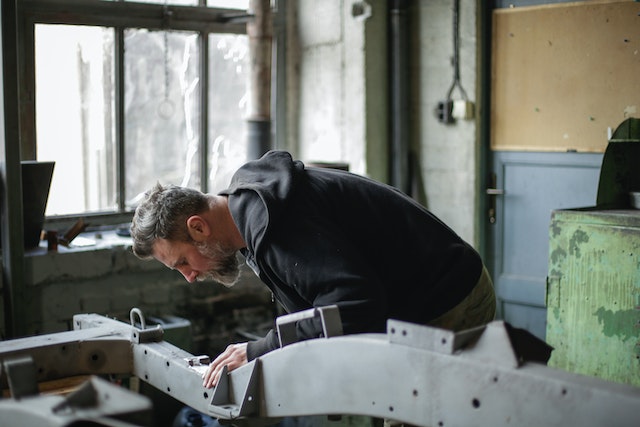
With an increase in demand for sophisticated auto parts, the automobile sector finds itself in a position where it needs to meet the level of required production and efficiency. To do this, the sector has been in the forefront of adopting cutting-edge technologies. One of these is the laser cutting technology which has revolutionized the manufacturing of automobiles.In this technology, high-powered lasers are used in the precise and adaptable technique known as laser cutting to accurately cut and shape a variety of materials.
In this informative post, we’ll look at how laser cutting service is transforming the production of automobiles, reducing procedures, and increasing efficiency in general.
The Advancement of Laser Cutting in the Automotive Industry
The history of laser cutting in the automobile sector is very interesting. Although it started to take off in the 1970s, it wasn’t until the late 1980s that it really started to take off in the automotive industry. Sheet metal cutting was once the main use for laser cutting because it provided a degree of accuracy and speed that conventional techniques could not match. As technology developed, lasers became more potent and were able to cut stronger materials, which made it possible for them to be used in a variety of automotive components.
Benefits of Laser Cutting for Automotive Manufacturing
In this section, we will delve into the key advantages of laser cutting in automotive manufacturing, exploring how it not only enhances productivity and precision, but also spurs innovation, cost-effectiveness, and environmental sustainability.
Precision and Complexity in Component Manufacturing
The capacity of laser cutting to make incredibly intricate patterns and complex structures with unsurpassed precision is one of its main advantages. This is especially useful for the automotive industry, where parts frequently have elaborate designs and precise tolerances. Manufacturers may produce components using precision laser cutting with little waste and no need for further finishing procedures. Overall production time is shortened as a result, which boosts productivity and reduces costs.
Lightweighting and Enhanced Vehicle Performance
The automobile industry has been concentrating more and more on lightweight in recent years to improve vehicle performance and fuel efficiency. By enabling producers to deal with lightweight materials like aluminum and high-strength steel, laser cutting plays a key role in this respect. Vehicles that are lighter without sacrificing structural integrity thanks to precision laser cutting are not only more fuel-efficient but also safer to drive.
Faster time to market and prototyping
In the automobile sector, time-to-market is a crucial consideration, and laser cutting greatly speeds up the prototyping process. Longer lead times were a result of the expensive molds and tools needed for traditional prototype techniques. On the other side, laser cutting enables quick and affordable prototyping by cutting parts straight from computer drawings. This expedites iterative changes and cuts down on development time, resulting in better products hitting the market sooner.
Enhanced structural integrity and safety
Automotive designers place a high priority on safety, and laser cutting helps keep vehicles’ overall structures strong. Since each component is precisely cut, there is little chance that there will be any weak spots or weaknesses in the structure of the vehicle. Further improving the safety of the finished product is the fact that laser cutting eliminates the need for mechanical cutting techniques that can cause stress concentrations in the material.
Integration with Industry 4.0 and automation
The principles of Industry 4.0 and automation are quite compatible with laser cutting. Lasers can be integrated into automated production lines thanks to advancements in robotics and artificial intelligence, which will improve manufacturing procedures. Reduced human intervention, decreased operating expenses, and increased overall productivity are the results of this integration. Since lasers can be programmed to carry out a variety of functions, including cutting, welding, and surface texturing, they are important tools in contemporary vehicle manufacturing facilities.
Reduced Waste and Environmental Benefits
Modern production has made sustainability a top priority, and laser cutting is a wonderful fit for this goal. Laser cutting’s accuracy reduces material waste since it can perform the most complicated cuts while consuming little material. Furthermore, laser cutting makes it simpler to process and shape these materials as the car sector increasingly investigates alternate and recyclable materials. As a result, the environment is less affected and the production processes are more environmentally friendly.
Personalization and Customization
Consumer preferences are changing, and more and more car buyers want customized options. Manufacturers may provide a wide range of modifications with laser cutting while maintaining high production speeds. Lasers can produce distinctive designs that appeal to individual tastes, giving automakers a competitive edge in a congested market, whether it is elaborate patterns on body panels or bespoke interior components.
Conclusion
Without question, the use of laser cutting in the automotive industry has reshaped both the design and production of automobiles. Its accuracy, adaptability, and automation integration have improved manufacturing operations, increasing productivity and cutting down on lead times. Laser cutting will become even more important as the automotive industry develops, allowing manufacturers to stay ahead of the curve and satisfy a market that is constantly evolving.